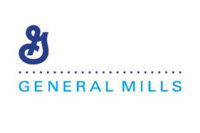If University of Guelph scientists Robert Lencki and John Craven are correct, they’re on the verge of providing chocolatiers with the industry’s version of the Holy Grail: a healthy fat that mimics cocoa butter in taste and functionality.
According to a recent article in the Globe & Mail, the two Toronto-based researchers have discovered the ultimate alternative to cocoa butter. As reporter Wency Leung writes, “…their solution lies in using a kind of fat called diacylglycerols, which the body metabolizes differently than the triacylglycerols of regular cocoa butter. Both fats are commonly found in food; the researchers liken them to sucrose and fructose, two natural sugars that are metabolized differently.”
Leung notes that while diacylglycerols have been used to produce vegetable cooking oils derived from canola and soybean oils for the health-food market, making them work as a confectionery fat has been challenging. The two Canadian scientists believe they’ve made a breakthrough with diacylglycerols that delivers health and taste. Nonetheless, it’s still in the developmental stage, so consumers and chocolate manufacturers will have to wait a bit.
In the interim, fats and oil suppliers are furiously working on providing confectioners with a broad range of healthier fats. Most recently, that work has focused on eliminating trans fats from fats and oils. Today, the research aims at lowering saturated fats.
As AAK USA marketing analyst Elyse Engelhardt points out, there’s “still a very strong emphasis on developing healthier fats; in fact AAK offers a wide variety of healthier fats for confectionery products including non-hydro, no-trans and lower saturated fat solutions.”
She cites Cebes LS, which contains 40-60% saturated fat, as one of the company’s new line of low saturated coating fats. TheCebes LS product line features fats that contain as little as 40% saturated fat content versus a typical coating fat that has more than 90% saturated fat.
“Reducing saturated fat, particularly in solid shortenings, is a general focus for the entire industry,” says Willie Loh, Cargill’s v.p. of marketing – oils & shortenings. For example, he cites the companyClear Valley all purpose shortening, which only has 22% saturated fat and can be used in a wide range of products.
“Cargill is also launching a line of interesterified shortenings, which match the functionality of partially hydrogenated oils, but contain lower saturated fat and virtually no trans fat,” he adds.
Loh points out that palm-based compound coatings also have gained some renewed interest because their saturated fat can be reduced.
Sometimes, however, it’s not a matter of reduction; addition can address the same need. Cargill recently developed a line of short chain omega-3 oils and shortenings that provide positive benefits to cardiovascular health.
“We are working with major CPG companies to incorporate omega-3 oils into their confectionary products,” Loh says. “A strong nutrient content claim on omega-3 strengthens the health image of chocolate.”
Applications also play a critical role in designing healthier fats. Take coating fats, which provide food technologists with a different challenge. AAK’s Confao line confectionery fats were developed specifically for confectionery centers.
“There are a variety of Confao products with various melting profiles, such as our Confao 50, which mimics the melting qualities of milk fat, or Confao 20 which can be used to create a firmer filling with better heat stability,” Engelhardt says.
At Cargill, there’s a strong focus on incorporating omega-3 fats into processed food.
But confectioners, while cognizant of consumer demand for healthier confectionery products, also face continuing pricing pressures, a phenomenon that mandates squeezing out costs as much as possible wherever possible.
As Engelhardt points out, “On the processing lines, time is money. Many manufacturers add a crystallization enhancer to their pastes in order to get a product coating to set up faster. We have a product which contains a high-melting portion that promotes a faster set up: Cebes 21-25 saves the manufacturer the time and risk of adding the exact right amount of a crystallization enhancer to their compound pastes.”
Finally, sourcing and traceability has taken on greater importance for manufacturers, retailers and consumers. Engelhardt agrees that there’s “a greater interest in tracing oils and fats to their source.
“As such, the demand across our industry for certified, sustainable oil continues to gain strength,” she says. “More and more, industry leaders are inquiring about the availability of certified sustainable oils, and AAK USA is well-positioned to deliver those products to its customers.”
Cargill’s Loh echoes those sentiments, emphasizing that “traceability and understanding the entire product supply chain are of growing importance to the food industry. Cargill’s activities in planting seed, production agriculture, crop origination, crushing, refining and further processing provide a complete view of the value chain. We participate in every major crop that produces oil and can provide our customers with a broad perspective on the sustainability of each.”
Naturally, as an agricultural product, fats and oils remain subservient to the whims of Mother Nature. This year’s drought in the United States has many manufacturers concerned about the impact it would have on commodities, such as soybean oil.
“At this time (early October), the shifting supply and demand equation in oilseeds due to drought has been significantly mitigated by an early harvest of the soybean crop,” Loh says. “In the past five to six weeks, commodity soybean oil pricing has been flat to decline.”
Nonetheless, Loh does acknowledge that there was a spike in interest relative to palm-based coating fats because of the rise in palm kernel prices last year.
And as Engelhardt points out, headlines sometimes don’t reflect reality. Companies like AAK USA that source commodity raw materials are impacted by price fluctuations. However, she says the company has not seen the extreme price increases as reported in the national media. It’s important to remember that the “surge” in pricing has not impacted all commodities equally,” Engelhardt says.
So the best advice to confectioners: tend to your fats and oils; there’s a lot going on out there.







